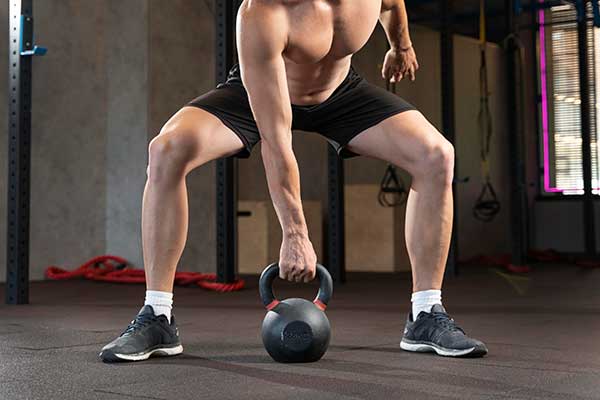How to Properly do The Back Barbell Row for Maximum Muscle Growth
Introduction to The Back Barbell Row Exercise
When it comes to building a strong and powerful back, few exercises can rival the effectiveness of the back barbell row. This compound movement targets multiple muscle groups, helping you develop size, strength, and stability all at once. Whether you’re a seasoned lifter or just starting out on your fitness journey, mastering this exercise can be a game changer for your overall physique.
But how do you properly execute the back barbell row to ensure maximum muscle growth? With the right technique and focus on form, you’ll not only enhance your workout routine but also minimize the risk of injury. Dive into this guide as we explore everything from proper execution to common pitfalls and variations that will keep your muscles guessing. Get ready to transform your training regimen!
Benefits of Incorporating Back Barbell Rows into Your Workout Routine
Incorporating back barbell rows into your workout routine can dramatically enhance overall strength. This compound movement targets multiple muscle groups, including the lats, rhomboids, and traps. Engaging these large muscles helps to build a solid foundation for other lifts.
Another significant benefit is improved posture. Strengthening the upper back counteracts the effects of prolonged sitting and hunching over devices. As you strengthen your back muscles, you’ll notice better alignment in everyday activities.
Additionally, back barbell rows promote grip strength. A strong grip not only benefits this exercise but also translates to other lifts like deadlifts or pull-ups.
Adding variety to your workouts keeps things fresh and exciting. The versatility of barbell rows allows for different angles and grips—ensuring that you won’t get bored while helping you avoid plateaus on your fitness journey.
Proper Form and Technique for Maximum Muscle Growth
To achieve maximum muscle growth with the back barbell row, focus on your form. Start by standing shoulder-width apart, gripping the bar with both hands slightly wider than your shoulders.
Bend at your hips and knees while keeping a flat back. Your torso should be almost parallel to the floor. This position ensures that you engage the right muscles throughout the movement.
As you pull the bar towards your abdomen, squeeze your shoulder blades together. This contraction enhances activation in your upper back and lats.
Lower the weight slowly to maintain tension in your muscles. Avoid using momentum; each rep should be controlled for optimal gains.
Breath plays an essential role too—exhale as you lift and inhale as you lower. Staying mindful of these details will greatly enhance effectiveness during each session, leading to impressive results over time.
Common Mistakes to Avoid When Performing Back Barbell Rows
One common mistake is rounding your back. This can lead to injury and decrease the effectiveness of the exercise. Always maintain a neutral spine while rowing.
Another pitfall is using too much weight. Many lifters sacrifice form for heavier loads, which undermines muscle engagement. Start with lighter weights to master your technique before progressing.
Additionally, neglecting shoulder positioning often occurs. Letting your shoulders shrug up towards your ears reduces stability and strength during the lift. Keep them retracted and down for optimal performance.
Rushing through reps can diminish results significantly. Focus on controlled movements rather than speed; this promotes better muscle activation and growth over time.
Variations and Modifications to the Back Barbell Row Exercise
For those looking to spice up their back barbell row routine, there are several variations and modifications worth exploring.
One popular option is the Pendlay row. This variation requires you to start each rep from a dead stop on the ground. It engages your muscles differently and promotes explosive power.
Another effective choice is the single-arm dumbbell row. This allows for greater focus on one side of your body at a time, helping correct muscle imbalances while enhancing core stability.
If you’re aiming to recruit more upper back muscles, try performing an incline barbell row by positioning yourself on an inclined bench. This change can shift emphasis away from the lats and onto the traps and rhomboids.
Consider using resistance bands in conjunction with your barbell rows for added tension throughout the movement. The bands provide variable resistance that challenges your muscles across different ranges of motion.
Precautions and Safety Tips When Doing the Back Barbell Row
Safety should always be a priority when performing any exercise, including the back barbell row. Start with lighter weights to master your form before increasing the load. This helps prevent injuries and ensures that you’re engaging the right muscles.
Maintain a neutral spine throughout the movement. Avoid rounding or arching your back, as this can lead to strain and discomfort. Keep your core tight for added support.
Always use proper grip techniques—whether you choose an overhand or underhand grip—to reduce stress on your wrists and shoulders. If you feel any pain during the exercise, stop immediately and reassess your form.
Consider using lifting straps if you struggle with grip strength; this can help you focus more on muscle engagement rather than worrying about dropping the barbell. Don’t hesitate to ask for assistance from a spotter, especially when lifting heavier weights.
Sample Workout Plan Including the Back Barbell Row
Incorporating the back barbell row into your workout plan can yield impressive results. It targets multiple muscle groups, making it a powerhouse exercise.
Start with a warm-up to prepare your body. Five to ten minutes of light cardio followed by dynamic stretches works well.
For the main workout, consider this structure:
1. **Back Barbell Row** – 4 sets of 8-12 reps.
2. **Pull-Ups or Lat Pull-Downs** – 3 sets of 6-10 reps.
3. **Seated Cable Rows** – 3 sets of 10-15 reps.
4. **Dumbbell Deadlifts** – 3 sets of 8-12 reps.
5. **Face Pulls** – 3 sets of 12-15 reps for shoulder stability.
End with core exercises like planks or Russian twists to round out your routine and maintain balance in muscle development.
This plan ensures you’re engaging various muscles while focusing on strength and growth through the back barbell row as a central element.
Conclusion
The Back Barbell Row is an essential exercise for anyone looking to build a strong, muscular back. By incorporating this powerful movement into your routine, you can effectively target multiple muscle groups and enhance overall strength.
Pay attention to your form and technique; it’s crucial for maximizing muscle growth and preventing injury. Avoid common mistakes by focusing on the right posture and range of motion. If you’re looking to mix things up, there are plenty of variations available that can add excitement to your workout while still delivering results.
Always keep safety in mind when performing any weightlifting exercise, including the back barbell row. Using proper equipment and technique will help you stay injury-free as you work towards your fitness goals.
With these tips in hand, consider integrating the back barbell row into a well-rounded workout plan designed for maximum gains. You’ll be on your way to achieving impressive results in no time!
- About the Author
- Latest Posts
Johnnie D. Jackow Sr., the founder and CEO of Total Body Fitness, Worldwide, has a long-standing career in the fitness industry. He began as a certified personal trainer in the mid-90s and soon after authored his first weight loss book in 1998. This led to the launch of Total Body Fitness, Nationwide in the USA at the same time. Johnnie gained recognition as the fitness guru of his time, running infomercials on local TV late at night in Houston, Texas. Over the years, he has helped more than 40,000 individuals from all over the world achieve their health and fitness goals. With over 60,000 hours of documented training in integrative functional medicine, he completed his PhD in human physiology in 2010. His primary objective is to assist people in reaching their health and fitness goals through alternative approaches rather than relying solely on conventional medicine and pharmaceutical drugs. Today, with almost three decades of experience under his belt, Johnnie continues to be a leader in health and fitness.








